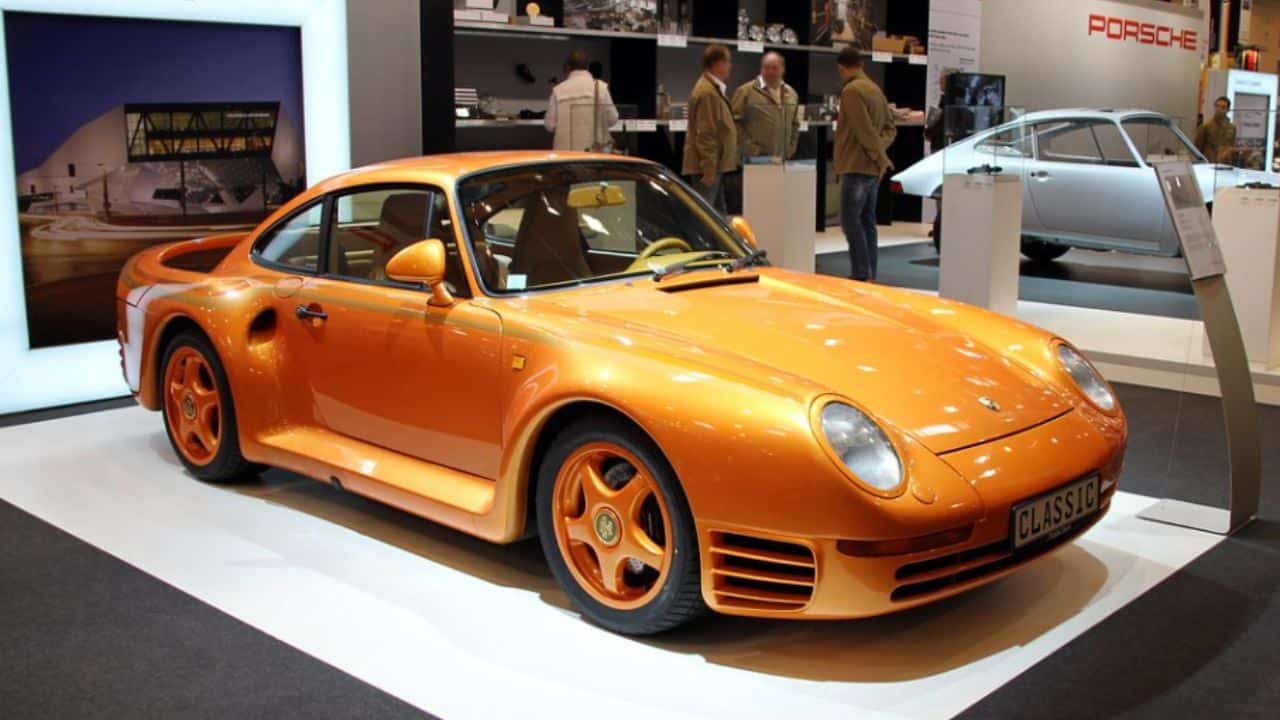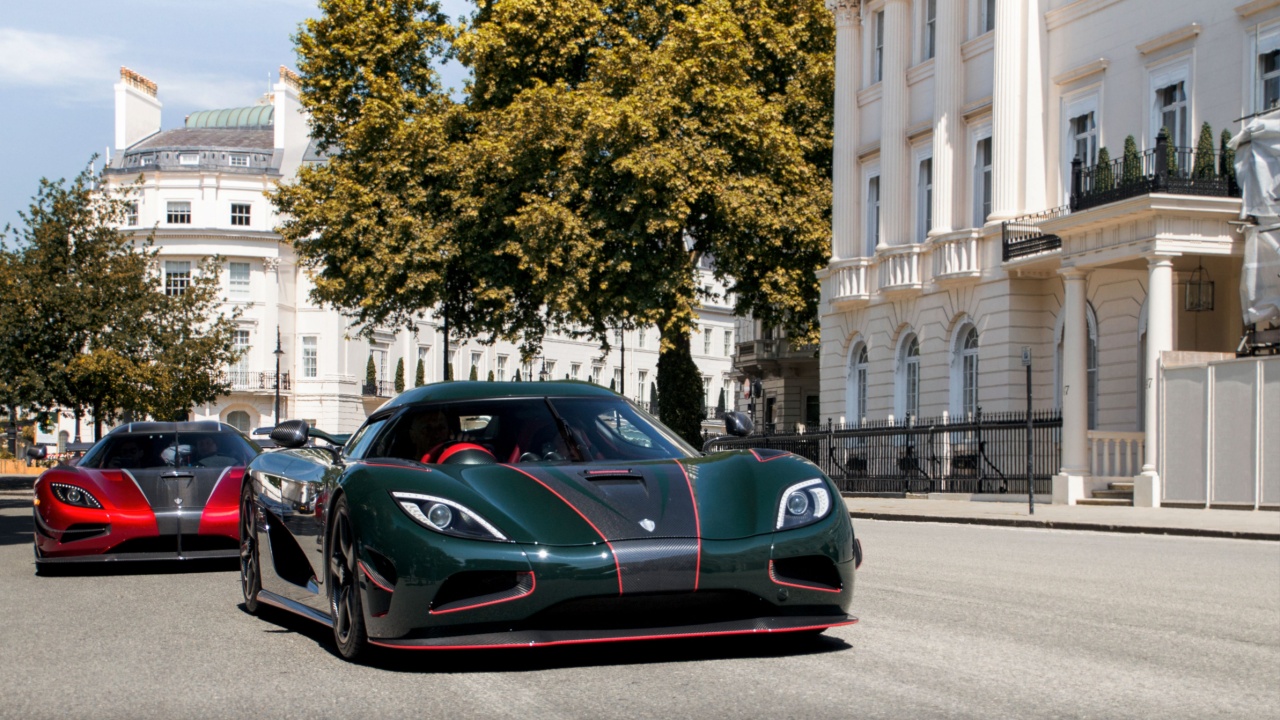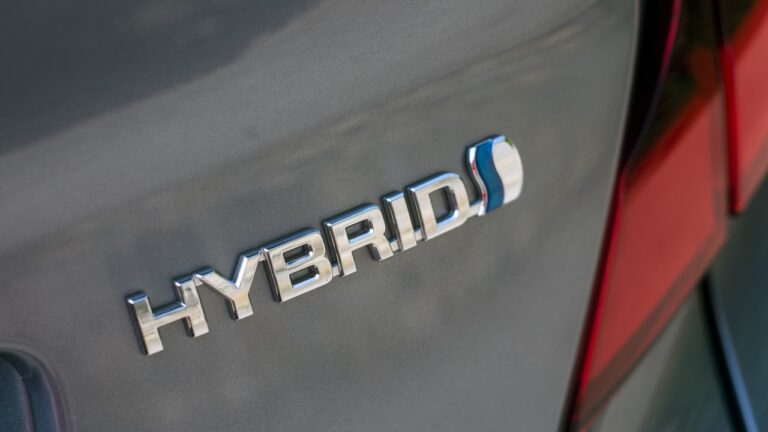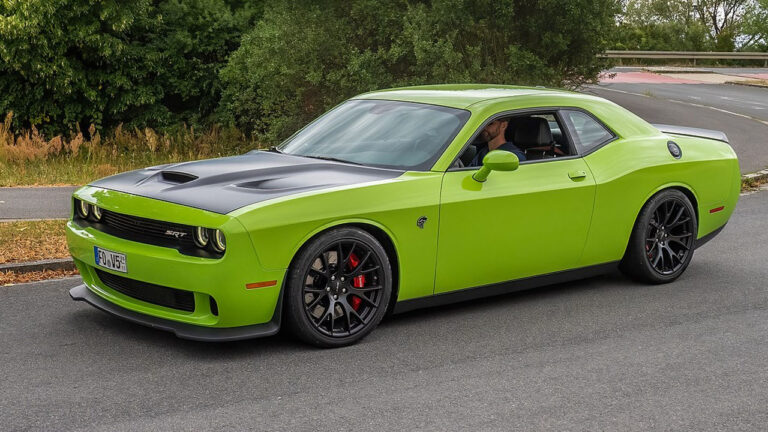13 Cars Banned for Being Too Fast

Roughly three decades ago (1990–1992 precisely), Lotus unleashed a car that — how should we put this — made the British government angry. They called it the Lotus Carlton, although it was more like a “Vauxhall Lotus Carlton,” seeing as it was a Carlton (Opel Omega A in Europe) that Lotus upgraded into a high-performance sports sedan. It even got the British marque’s traditional “Type” designation — Type 104, they called it.
The car stunned everyone with its 177-mph top speed. The Daily Mail and some members of the British parliament were so stunned that they called for its ban from UK roads. Their campaign failed. The issue wasn’t so much about the top speed than that the Carlton was a sheep in wolf clothing — a 4-door sedan faster than the 964 Porsche 911, BMW M5, and even the Ferrari 348.
Interestingly, Lotus has just waded into similar waters with the recently unleashed Emeya supersedan, another tempest in a teapot in the form of a 950-hp 4-door sedan, supposedly a response to the Porsche Taycan. By comparison, the fastest Taycan (Turbo S) uses overboost with launch control to deliver 938-hp. Yet no one is calling for the Emeya’s head on a platter. These 13 cars aren’t as lucky as the Carlton and Emeya. They were banned for being too fast.
Porsche 959

You are now free to import the 959 under the Show and Display rule, but you’re still not all that free to drive it on public roads. You couldn’t even bring this car to America in the mid-1980s (1987 specifically) when the 959 transformed from a Group B rally car into a road-legal production car.
The Show and Display loophole is how Bill Gates eventually got his through customs after sitting for a long time in a California port. The 959 was on the National Highway Traffic Safety Administration’s (NHTSA) blacklist. While the ban was primarily connected to US safety standards, speed was a factor.
It produced 450 hp and could race to 60 mph in 3.7 seconds, achieving a top speed of 198 mph. Contrary to popular belief, the 959 never took the test it purportedly failed. Porsche was reportedly strapped for cash and could not spare the four cars required for the test.
TVR Cerbera Speed 12

We wouldn’t quite use the word “banned,” suggesting a ban by the authorities. The case of the TVR Cerbera Speed 12 can be correctly termed a voluntary ban or a self-imposed exile from public roads. In our book, it’s the mildest assessment of a British roadster deemed too powerful and dangerous for regular roads.
It was TVR’s owner, Peter Robert Wheeler, who, after taking a prototype for a spin, admitted that his own car was too wild for any form of series production. It used a free-breathing 7.7-liter V12 rumored to deliver approximately 1,000-hp and send the car to 60 mph in 2.9 seconds.
Consequently, just three Speed 12 prototypes were born from Project 7/12, one of which was eventually converted into a road car. The plan to race the car at the Le Mans never materialized due to rule changes and the emergence of other high-cost racers. The racing versions were called the Speed 12 GTS.
Koenigsegg Agera R

Any surprise that this phenomenal hypercar faced restrictions in some countries (including the USA) due to its extreme speed capabilities? The Agera R’s 5.0-liter V8 churns out a staggering 1,140-hp, enhanced by insane technical solutions such as front winglets and an Aero exhaust.
What the US watchdogs and Koenigsegg have going on around the country’s homologation rules would appear shrouded in secrecy, but what’s not secret is that few Agera R owners in America are free to drive the car on public roads. We don’t know for sure why this is so, but many rightly suspect the car’s unique fuel management system and other specific features.
Ferrari F40

The F40 wasn’t free to roam the streets in some countries like the United States because it failed to meet all local safety regulations. You could say the F40 was not outlawed specifically for being too fast, but that’d mean neglecting the palpable connection between performance and emissions.
We have catalytic converters, exhaust gas recirculation systems, and particulate filters because cars must pass emissions tests, but these techs typically impact engine performance. A car can be significantly faster without them, and without them, they do not pass emissions regulations.
The 201-mph Ferrari F40 was one of the fastest cars of its time and could not meet US emissions and safety standards. When Gas Monkey Garage restored a wrecked model in one of its Fast N’ Loud TV shows, the person who bought it had to cede it to the U.S. government.
Bugatti Chiron

Yep, the world’s most famous speed machine is, um, shadow-banned from regular roads due to its combination of extreme speed and bank-breaking price point, making it difficult to insure. You’ve spotted the Chiron here and there in the US, and now you’re wondering what in the world it is doing in this list. Sure, the Chiron is street-legal, but only with some alterations.
Every Chiron you’ve seen on public roads has its rear bumpers modified to meet the almighty U.S. federal bumper standards, which “requires protection in the region 16 to 20 inches above the road surface.” Europe has its variation of the ‘bumper rule’ with a similar goal. So, while the Chiron isn’t banned, per se, you can’t drive it as is, either.
Pagani Zonda R

Again, we hesitate to use the word “banned” to suggest a specific targeting by the government. The fact of the matter is that Pagani could never have dreamed of the Zonda R being worthy of public roads. It’s an 800-hp V12-powered speed demon designed purely for track use.
The car’s development from the ground up made no compromises for road use or demonstrated any concern for emissions and safety standards. It completed a lap of the Top Gear test track in an astonishing 1 minute and 8.5 seconds but got disqualified from the Power Lap board because it wasn’t road-legal.
Jaguar XJ220

So, we should’ve just focused on the XJ220-S and left the standard XJ220 alone, right? Not quite. The XJ220-S is the poster child of cars banned purely on the basis of them being too fast. Born in 1992 to commence production the following year, the S boasted a V6 with 680 hp, a sizeable 130 ponies more than the standard model.
The deal-breaking part with the NHTSA, we suppose, is its astonishing 213 mph top speed. It was supposed to be a road-going version of the XJ220-C racing car. It made efforts to that end by getting rid of the hidden headlights. Still, the NHTSA couldn’t resist slamming a fatwa on it despite there being just six of them made.
And then there’s the supposedly ‘standard’ XJ220. Its name was actually derived from the target top speed of 220 mph, although it stopped short at 212.3 mph.
We have reasons to believe even the XJ220 wouldn’t be legal to drive in the USA right now because Jaguar made modifications to achieve its record-smashing speed goals, including removing catalytic converters and raising the rev limiter to 7,900 rpm. Catalytic converters weren’t a legal requirement in Europe back then, but the story is different today.
Maserati MC12

The MC12 is a limited-run 2-seat supercar inspired by the Prancing Horse’s Ferrari Enzo. Maserati had its eyes set on the FIA GT competition when it developed this car. It eventually tweaked the formula to birth road-legal versions, resulting in a 630-hp speeding beast with an F-50-style targa roof and a 6.5-ft rear wing.
It used dry-sump lubrication that enhanced its cornering potential at high speeds and a carbon fiber monocoque chassis rumored to weigh a paltry 154 lbs. The MC12 dominated GT racing, but tongues never stopped wagging over its legality. Eventually banned by the French Automobile Club de l’Quest over its length, Maserati had to skip the Le Mans.
Lamborghini Sesto Elemento

Here is another Italian 4-wheeled beast that didn’t expect to be allowed on the children’s playground — the Lamborghini Sesto Elemento. The Elemento supercar benefited from an extensive use of carbon fiber, developed exclusively for track use and embracing an extreme combination of lightweight construction and high performance.
It is content with not showing face on public roads as long as it can accelerate from rest to 60 mph in 2.5 seconds. It’s all fine and dandy to marvel at the Sesto’s seductive curves and performance stats. Just don’t dream of touching the tires on U.S. roads.
Dodge Charger Daytona

They stopped short of saying it was the Charger Daytona they were after, but everyone knew the aero warriors (including the Plymouth Superbird) were the primary targets of NASCAR’s new aero rules of 1971.
The Daytona fought the “aero wars” with extreme aerodynamic designs marked by pointy, elongated nose cones, giant rear wings, smooth body lines, and flush-mounted rear windows. The result was that the Daytona and Superbird were simply too fast to be left alone, so the ruling body had to level the playing field by clipping the warriors’ wings with new rules.
1990 BMW M3 Sport Evolution III

The M3 Sport Evolution III, a drool-inducing homologation special, couldn’t fool the US watchdogs with its deceptively small-displacement 2.5-liter engine that could take on Audi’s V8. We want to believe BMW wasn’t out to bamboozle anyone.
The M3 line was fresh in the family and needed the new 4-cylinder since the E30’s 6-cylinder couldn’t fit inside a daily driver. Be as it may, the NHTSA concluded the engine didn’t cut it. It happened that it made an easy 200-hp in stock form, with the competition-spec version cranking out up to 300 hp at 8,000 rpm.
It left the Sport Evolution with a 154 mph top speed. BMW had to find other markets to sell the 5,000 homologated examples in the required 12-month window. Barring the hood, roof panel, sunroof, and inner door panels, it had nothing else in common with the regular 3-series.
1999 Nissan Skyline R34 GT-R V-Spec

The sad reality of the R34 GT-R V-Spec’s ban stateside is a most painful one all too familiar in ardent JDM circles. It was thoroughly advanced for its time, flaunting a novel display screen on the dashboard that showed engine and operational data, such as the number of G-forces the car was experiencing.
You can now import the R34 GT-R V-Spec into the country but can’t drive it on public roads. At this point, you’re welcome to enjoy it as a drag racing machine or as an exhibit at car shows, provided you arrange transportation to and from the venue. That sucks. The 1999 Nissan Skyline R34 GT-R V-Spec is banned from public roads thanks to the Federal Motor Vehicle Safety Standards of 1988.
1993 Lamborghini Strosek Diablo

The Lamborghini Strosek Diablo was a prime suspect and an easy target for a US ban, seeing as the standard Diablo was already deemed too fast with over 200 mph top speed. While the standard Diablo is street-legal in the USA, it initially failed to meet some safety and emissions regulations for which Lamborghini had to make some modifications.
Vittorio Strosek’s version of the Diablo didn’t stand a chance with its smaller headlights and unconventional roof-mounted mirrors, even if he went to some lengths to restrict the engine output to under a 200 mph barrier.





